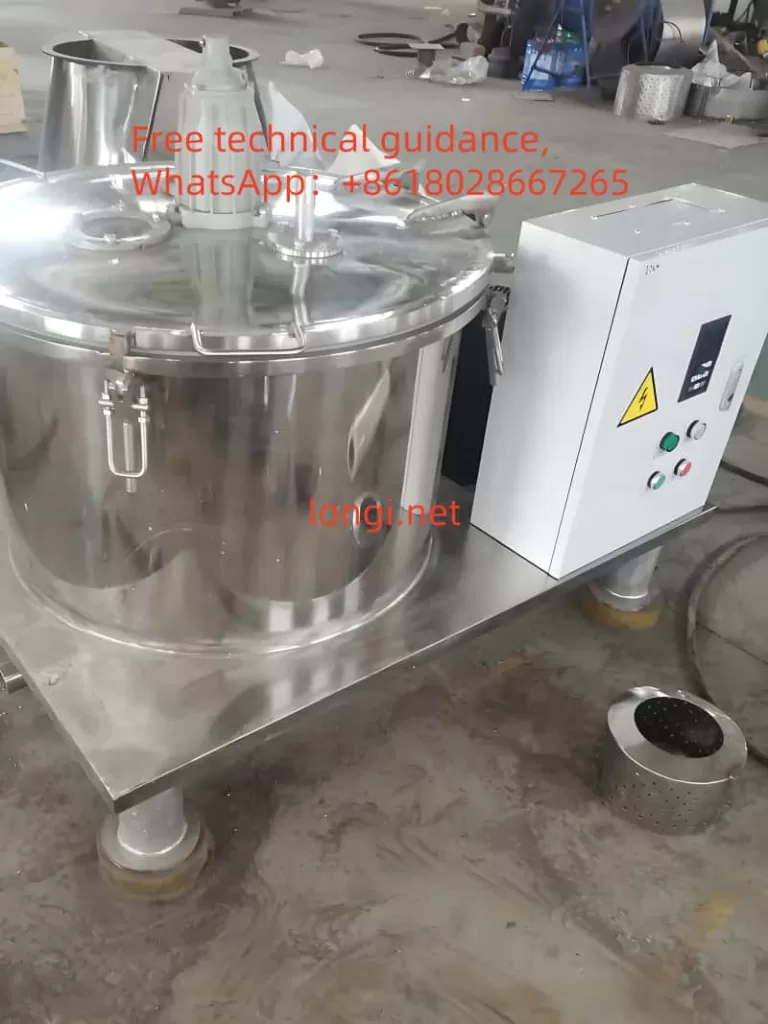Introduction
A centrifuge is a device that utilizes centrifugal force to separate different components in a mixture. Its working principle is based on Newton’s second law, where the centrifugal force experienced by an object during rotation is proportional to the square of the angular velocity and the radius of rotation, and also proportional to the mass of the object. In a centrifuge, substances are placed on a rotating turntable and accelerated along with it. As the rotation speed increases, the substances experience centrifugal force, leading to their separation into different components. Factors such as the rotation speed, turntable diameter, and turntable material of the centrifuge all influence the magnitude of the centrifugal force and the effectiveness of the separation.
I. Operation Method of the Centrifuge
The operation of a centrifuge generally involves the following steps:
Preparation Stage:
- Check if the centrifuge is in normal working condition.
- Prepare necessary centrifuge tubes, turntables, and other accessories.
Loading Samples:
- Place the substances to be separated into centrifuge tubes.
- Position the centrifuge tubes on the turntable of the centrifuge, ensuring they are correctly placed and evenly distributed to maintain balance.
Setting Parameters:
- Set the parameters of the centrifuge, such as rotation speed and centrifugation time, according to the separation requirements and sample characteristics.
Starting the Centrifuge:
- Press the start button to initiate the centrifuge.
Monitoring the Centrifuge:
- Monitor the running status of the centrifuge during operation to ensure the centrifugation process proceeds normally.
Stopping the Centrifuge:
- After centrifugation is complete, press the stop button, halt the centrifuge, and retrieve the separated substances.
II. Common Faults and Troubleshooting Methods for the Centrifuge
The centrifuge may encounter various faults during use. Below are some common faults and their troubleshooting methods:
- Unbalanced Centrifuge or Uneven Placement of Centrifuge Tubes:
- Adjust the level of the centrifuge to ensure it is stable.
- Evenly distribute the centrifuge tubes to avoid imbalance caused by uneven weight distribution.
- Loose or Damaged Rotor:
- Check if the rotor is loose or damaged, and replace it if necessary.
- Loose Screws, Worn Bearings, or Motor Faults:
- Tighten the screws of the centrifuge.
- Check for bearing wear and replace if necessary.
- Check for motor faults and repair or replace if needed.
- Blocked Oil Filter or Oil Leakage:
- Inspect the oil filter, oil pipes, and connectors to ensure they are unblocked.
- Check for oil leakage and repair promptly if found.
- Power Issues or Damaged Circuit Board:
- Check if the power plug is properly inserted and the power cord is energized.
- Check if the fuse is burned out and try replacing it.
- If the above are normal, the circuit board may be damaged and needs to be returned for repair or replacement.
- Water Circuit Issues or Damaged Seal Rings:
- Check if the water circuit is unblocked and the solenoid valve is functioning properly.
- Inspect the seal rings for damage or impurities and replace if necessary.
III. Maintenance Methods for the Centrifuge
The maintenance of a centrifuge mainly includes the following steps:
- Cleaning:
- Regularly clean the centrifuge to remove accumulated dirt and residues, restoring the design dimensions of the cavity.
- Inspection:
- Regularly inspect various components of the centrifuge, including feed pipes, drums, spirals, housing, frames, and motors, to ensure they are in normal structure and working condition.
- Calibration:
- Regularly calibrate the assembly components of the centrifuge to ensure good dynamic balance.
- Lubrication:
- Regularly lubricate the bearings, gears, and other components of the centrifuge to reduce wear and extend service life.
- Maintenance:
- Regularly maintain the centrifuge, including replacing worn components and cleaning internal dirt.
- Fault Diagnosis:
- Promptly diagnose the cause of any faults in the centrifuge through methods such as listening to sounds, checking the power supply, and viewing fault codes on the display. Seek professional assistance if unable to resolve.
IV. Centrifuge Brands and Models Repaired by Longi Electromechanical Company
- Beckman Coulter:
- Avanti JXN-30
- Avanti JXN-26
- Allegra X-30 Series
- Allegra V-15R
- Microfuge 20 Series
- Optima XE/XPN Series (XE/XPN-90, XE/XPN-100, XE/XPN-80)
- Thermo Fisher Scientific:
- Sorvall LYNX 6000
- Sorvall Legend X1/X1R
- Sorvall ST 16/ST 16R
- Sorvall RC 6 Plus
- Sorvall Evolution RC
- Sorvall BIOS 16
- Sorvall WX+ Ultracentrifuge Series (WX Ultra 80, WX Ultra 90, WX Ultra 100)
- Eppendorf:
- 5810/5810 R
- 5910/5910 R
- 5424/5424 R
- 5430/5430 R
- 5804/5804 R
- Centrifuge 5920 R
- Centrifuge 5702/5702 R
- Hettich:
- Rotina 420/420R
- Rotofix 32A
- Rotina 380/380R
- Universal 320/320R
- EBA 200/200S
- Mikro 200/200R
- Sigma:
- Sigma 8K
- Sigma 6-16 KS
- Sigma 3-30KS
- Sigma 2-16K
- Sigma 1-14
- Sigma 4-5L
- Sigma 3-18KS
- Sorvall:
- Sorvall RC-5B Plus
- Sorvall RC 12BP Plus
- Sorvall Legend XTR/X1R
- Sorvall MTX 150
- Sorvall RC-6 Plus
- Beckman Optima:
- Optima MAX-XP
- Optima MAX-TL
- Optima XPN/XE
- Hitachi:
- Himac CR21GIII
- Himac CS150FNX
- Himac CR30NX
- HERMLE:
- Z36HK
- Z446
- Z326
- Z216MK
- Thermo Sorvall:
- Thermo Sorvall LYNX 4000/6000
- Thermo Sorvall WX 80/90/100 Ultra Series
- KENDRO (Acquired by Thermo Fisher):
- High-Efficiency Centrifuges: Sorvall RC-6 Plus, Sorvall RC-5C Plus, Sorvall RC-3BP Plus
- Ultrahigh-Speed Centrifuges: WX Ultra 80, WX Ultra 90, WX Ultra 100
- Benchtop Centrifuges: Heraeus Multifuge X3/X3R, Heraeus Megafuge 8/8R
- Microcentrifuges: Heraeus Pico 21/Pico 21R, Heraeus Fresco 17/Fresco 17R
- Multifunctional Centrifuges: Sorvall Legend X1/X1R, Sorvall Legend XT/XTR
- Hunan Xiangyi:
- CH210
- CHT210R
- HT150R
- HT165R
- HT200
- HT200R
- H2050R
Conclusion
Longii Electromechanical Company has nearly 30 years of experience in repairing centrifuges and can quickly repair various instruments. Additionally, we recycle and sell various used centrifuges. Welcome to consult with us.


